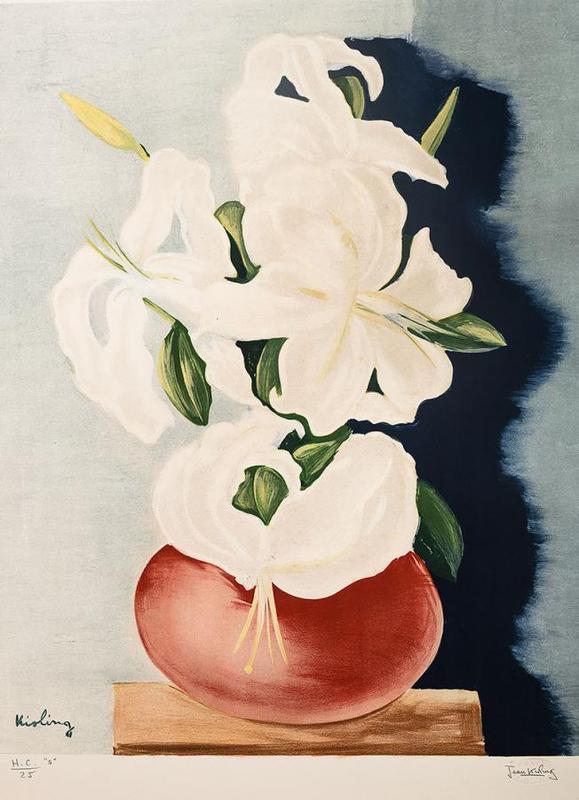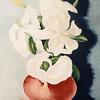Color lithography entitled "Lilies" on paper without a frame. Lithograph published by the painter's son (Jean Kisling) in a limited edition.
Sign. from the album ld: Kisling, inscriptions in ch. under Fig. l.: HC/25 "s", p.: Jean Kisling (on an oval dry seal with the inscription Atelier Kisling in the rim)
Biography:
Moses Kisling (1891 - 1953). Painter, representative of Ecole de Paris. He was born in Kraków. He began his studies at the Academy of Fine Arts in Krakow in the studio of Józef Pankiewicz. He settled permanently in Paris in 1911, where he associated with a group of artists of Jewish origin who came mainly from Russia and Central and Eastern Europe and became one of the most outstanding representatives of the Ecole de Paris. He served during World War I in the Polish branch of the Foreign Legion, thanks to which he obtained French citizenship. In the interwar period, he achieved the greatest artistic successes, while traveling extensively in Italy, the Netherlands and England. He also often traveled to Provence. While living in Montparnasse, he became a well-known figure in society, and his studio was visited by many outstanding artists. He exhibited a lot, especially at the Paris Salon and numerous galleries throughout Europe, and nationally in Krakow and Warsaw. During World War II, he joined the French army and then went to New York. After returning in 1945, he settled permanently in Sanary-sur-Mer. His studio in Paris at 3 rue Joseph-Bara in Montparnasse was a meeting place for the artistic and intellectual elite; Pablo Picasso, André Derain, Juan Gris, Amedeo Modigliani, Chaim Soutine, Charlie Chaplin and Ernest Hemingway visited it. A painter known and appreciated not only in Poland but also around the world.
His work initially shows the influence of the art of Władysław Ślewiński, Picasso, Braque, Gris, and later, temporarily, Cezanne. Thanks to these influences, he created his own unique style based on slight deformation of contoured forms and intense colors, especially in landscapes. The artist's interwar work was dominated by a lyrical image. The models' faces were uniformly styled: they were distinguished by the elongated, almond shape of exaggerated eyes, carefully drawn eyebrows and lips. “In the early phase of Kisling's work from 1912-18, his fascination with Cezanne's art was expressed; in still lifes and landscapes, the artist synthesized and geometrized solids, piled up compositional plans, and introduced a raised point of view that tightened the pictorial space. (…) Influenced by contacts with Cubists, he painted southern French landscapes with a geometric style borrowed from the paintings of Picasso and Braque from around 1909. He was looking for a formula of decorativeness in which synthesized architectural shapes harmonize with the organic forms of nature. (…) In his landscapes, he presented shapes in silhouette, and gave colors an intensity comparable to the Fauvist palette. In the years 1917-18, in addition to the views from Saint-Tropez, which were characterized by a whitened palette and ethereal nature, landscapes were created with a deeper expression evoked by a range of sharp, strong, contrasting colors; These compositions, bordering on abstraction and concentrated in expression, were painted impasto, with diagonal brush strokes. Some views of ports with sailing boats and a deserted waterfront referred to the poetics of "metaphysical painting". In his landscapes, Kisling also referred to 16th-century composition patterns, presenting vast landscapes, built behind the scenes, with a suggestively rendered spatial depth.
Saturated colors dominate, especially red, pink, blue and purple.


